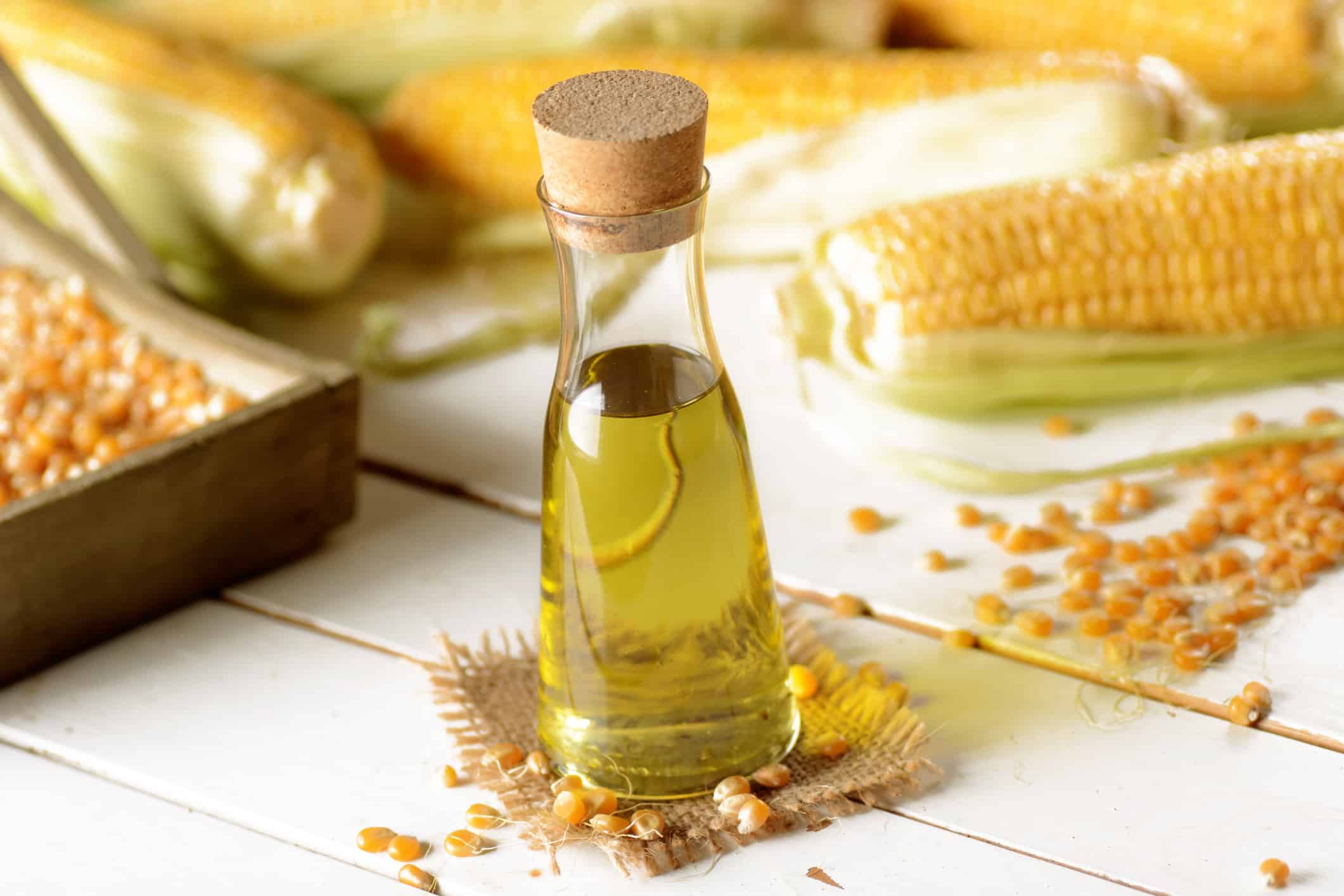Considering your options between corn oil vs. olive oil? Well, here are the most important differences to keep in mind while picking between the two. Firstly, one much consider where corn oil vs. olive oil comes from. Corn oil is extracted from corn kernels, and is known for its bland, quite neutral flavor.
Olive oil, on the other hand, comes from the fruit of ripened olives. It varies in color and flavor, depending on the type of olive used for extraction, and how ripe the olive was that was used. It's also common to find infused olive oils, which can drastically change the taste profile of olive oil. Finally, in terms of the cooking ability, each oil has a slightly different but similar heating point. Overall, there's a reason that olive oil is a staple in the kitchen, but if you're looking for a neutral oil to add to your routine, corn oil may be the way to go.
In this post, you'll learn about the major differentiating features between corn oil vs. olive oil. We'll discuss some of their history and the process used to make each one. You'll get some recipe ideas and a better understanding of the nutritional value that corn oil vs. olive oil can add to your cooking overall. Keep on reading to go on a deep dive into the weighable differences between corn oil vs. olive oil in cooking.
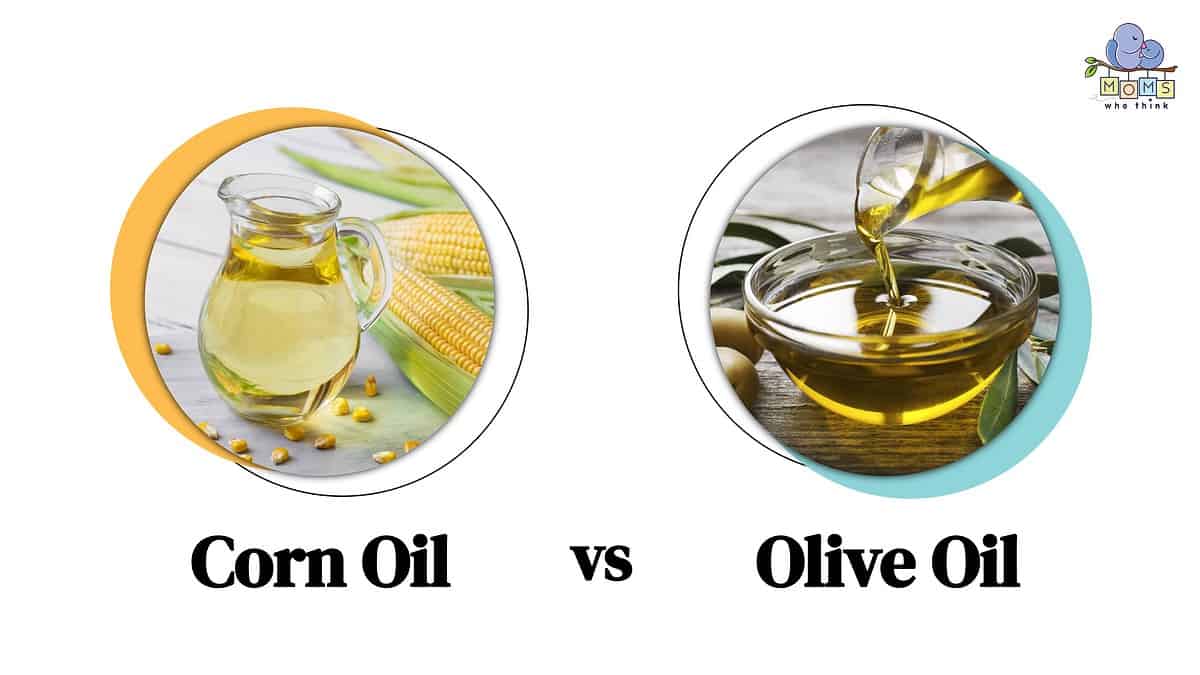
©
Corn Oil vs. Olive Oil: What is The Difference?
Corn oil is extracted from corn kernels in a process that pretty much neutralizes the flavor. It is light yellow in color and easy to use for cooking, the same as other vegetable-based oils. Olive oil comes from ripened olives and is bottled in many colors. The shade difference and the flavor difference are heavily impacted by the type of olive used as well as the ripeness of said olive. While these two oils have similar uses and applications in terms of cooking, they are quite different in origin, flavor, and coloring.
What is Corn Oil?
Corn oil is an oil that is extracted from corn kernels via a hydraulic press or a screw press. Because corn is not a naturally oily food, the kernels are mechanically pressed to get the oil out. The gathered oil then undergoes chemical processes and cleansings that remove impurities, flavorings, and any smells.
Aside from being used for cooking, corn oil is also a component of many soaps, cosmetics, inks, paints, insecticides, and in the creation of biodiesel (via Brittanica).
History And Origin of Corn Oilve
According to Spiceography, the oil extraction process for corn oil didn't take off until the 1890s. Theodore and Benjamin Hudnut created a machine for crushing corn into a meal. This process helped the oil in corn kernels to be extracted more efficiently. Corn oil wasn't immediately accepted into the cooking oils club, at first it was used much more in industry inventions. Corn oil is still an ingredient in cosmetics, cleaning solutions, insecticides, and in biodiesel. In the 1960s corn oil gained popularity due to its shelf life, affordability, and similar cooking temperature to olive oil.
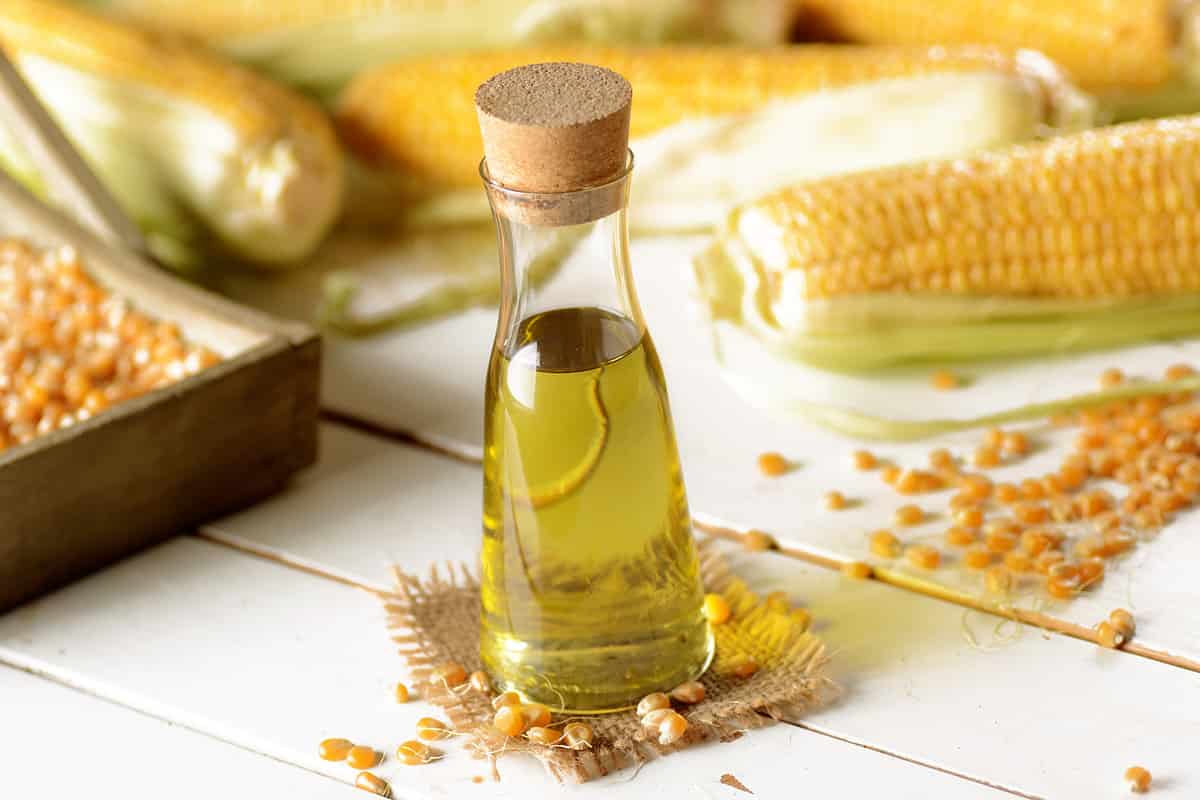
©iStock.com/al62
Uses For Corn Oil
Like olive oil, the most common ways to use olive oil involve sautéing, baking, frying, and stirfrying. While corn oil has little to no taste, it does have a creamy quality. Comparing it to butter is the reason some people will use it in baking cakes, and other delectable treats and sweets. It gives a moist and lovely texture to cakes, cookies, and bread. Outside of cooking, you can use corn oil as a sauce base. Simply add some flavoring for salad dressings and other savory sauces.
What is Olive Oil?
Olive oil comes from the ripened fruit (olives) of olive trees. It can come in many colors including yellow, gold, green, and a more tannish shade as well. The color and the flavor are dependent on the type of olive being pressed for oil. How ripe or unripe the fruit is, also has an impact on the overall taste and appearance.
Olive oil is made through a 6-step process, broken down as follows by Brightland, an olive oil company,
The first step is the harvesting process, in which olives are chosen for particular oils depending on the type and level of ripeness. Next, the fruit is separated from the leaves and branches. These fruits go through a crushing machine. You are left over with an olive paste at this step in the process. Next is the operation of malaxation. Malaxation is when water is added to the olive paste to start separating the oil from the fruits. Next, the whole batch is pressed. This can be done with mechanical presses or in a large centrifuge. It is optional to refine the oil once it has been separated. Refining the oil involves heating and adding chemicals to the olive oil to change its taste, color, and consistency. Extra virgin olive oils are unrefined. Typically only lower-quality olive oils need to be refined. Finally, the mixture is bottled for sale.
Olive oil, like corn oil, is used in a number of non-culinary ways. Olive oil is commonly used for wool combing, in the creation of cosmetics, pharmaceuticals, medicine, soap, and in lubricants.
History and Origin Of Olive Oil
Olive trees can be traced some 6,000+ years back to the territories that make up modern-day Turkey. Early on they were used for religious rituals, in oil lamps, soap, skincare, and in medicines. Evidence shows that the more modern versions of the olive tree likely came from Persia and Mesopotamia, spread throughout the Mediterranean basin, and into North Africa. However, olives were found in Egyptian tombs that date back to 2,000 B.C. Olive oil was cultivated in Crete in 3,000 B.C. becoming a staple of the island's agricultural economy. Olive farming spread through Spain and the Roman Empire and was brought to the Americas in the 16th Century A.D. Spanish Missionaries brought olive trees to California, which spread in the warm climate. Modern-day, California has a thriving olive oil industry, which depends on modern inventions like mechanical presses (via Brightland).
How To Use Olive Oil
Use olive oil for canning, and preservation (think canned fish). Many olive oil flavor infusions are done with vegetables and herbs that can be preserved in the oil (garlic, rosemary, etc). Use olive oil in frying, sautéing, stir-frying, and baking. Olive oil cakes are a particularly delectable dessert with the added moisture from the olive oil. Try an olive oil cake with some added cream and some fresh fruit. There are simply so many uses for olive oil, so use your imagination, look up a recipe, and start cooking!
Nutritional Value
In terms of nutritional value, corn oil vs. olive oil have similar amounts of calories, fat, and saturated fat. Check out the handy chart below to see how comparable these two oils really are. According to Healthline, corn oil has a fair amount of Vitamin E, which acts as an anti-inflammatory. Olive oil also has positive health benefits including helping to reduce the risk of heart disease. Read more here.
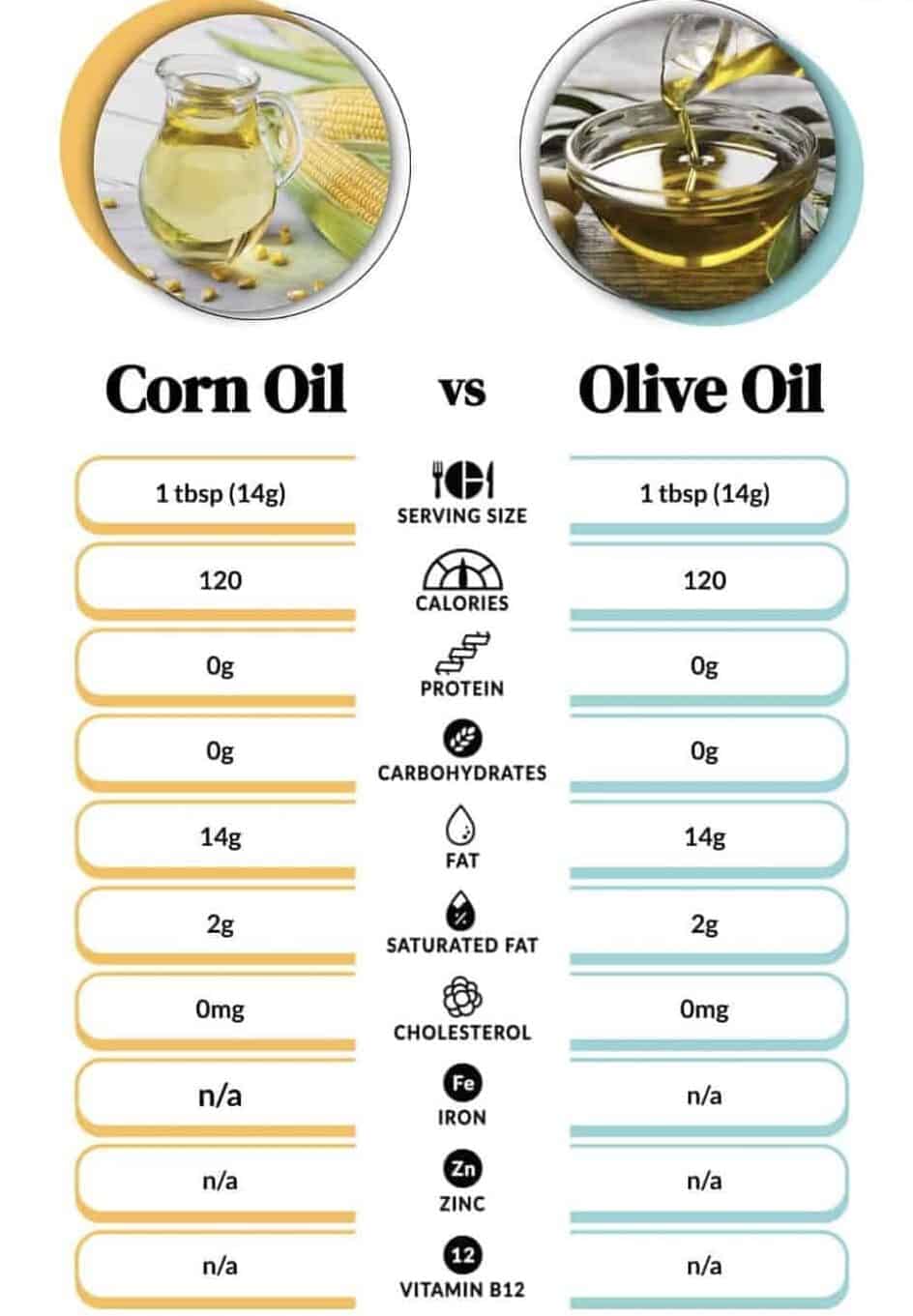
Possible Alternatives To Corn Oil or Olive Oil
The easiest alternatives to corn oil and/or olive oil are other cooking oils. Try out grapeseed oil, avocado oil, safflower oil, sunflower oil, walnut oil, flaxseed oil (also called linseed oil), canola oil, sesame oil, and walnut oil. There are non-dairy butter options as well as a clarified butter product known as ghee. All of these will make reasonable substitutions in certain dishes, however, they may change the taste because each oil is processed slightly differently. So do your research before assuming they'll be a perfect substitute.
Corn Oil vs. Olive Oil: Are They The Same Thing?
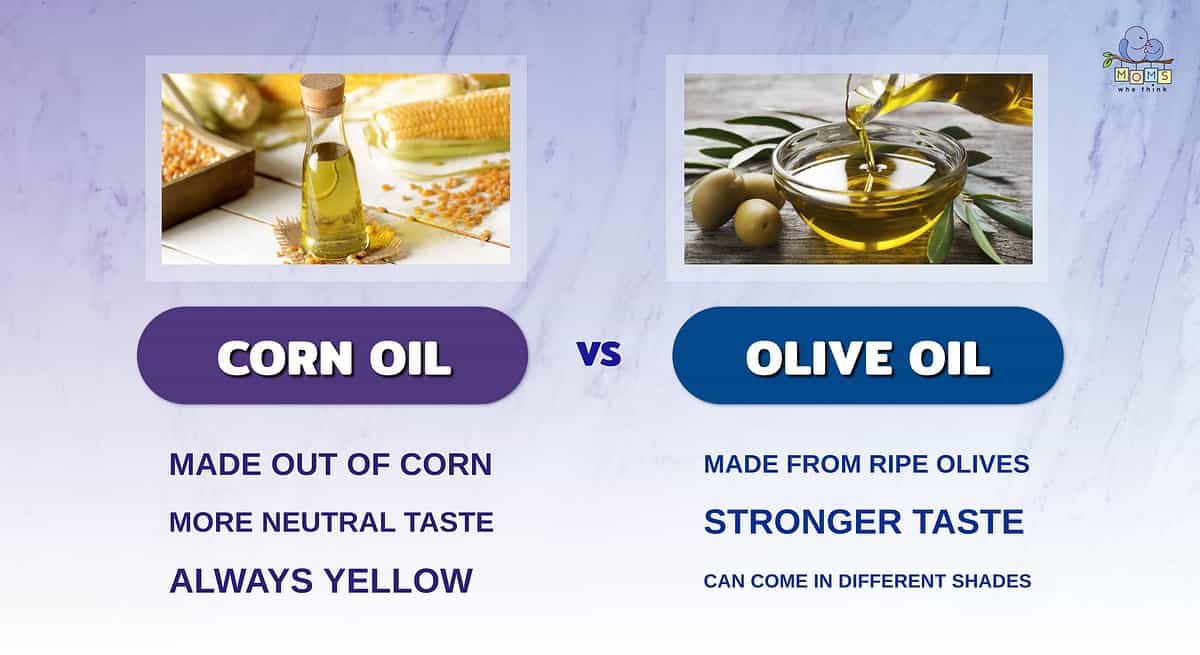
- One of the most obvious differences between corn and olive oil is their source. Corn oil comes from corn, while olive oil comes from ripened olives.
- Corn oil has a much more neutral taste than olive oil. Adding olive oil to a recipe could change its flavor profile, although likely only slightly.
- Olive oil can come in a range of shades, while corn oil is always yellow.
In short, corn oil and olive oil are not the same thing, though they can be used in similar ways. Both are great for baking, frying, and cooking. However, corn oil has a much more neutral taste than olive oil, which makes it a great base to add other flavors. Olive oil, comes in many flavorings, which are dependent on how ripe the olives were when the oil was extracted. Olive oil is often described as bitter and smooth, and it can be further infused with flavors due to its preservative qualities.
Before you go, take a look at this olive oil garlic chicken recipe:

Olive Oil Garlic Chicken
- Total Time: 50 minutes
Ingredients
- 2 teaspoons crushed garlic
- 1/4 cup olive oil
- 1/4 cup dry bread crumbs
- 1/2 cup grated Parmesan cheese
- 4 skinless, boneless chicken breast halves
Instructions
- Preheat oven to 425 degrees F.
- Warm the garlic and olive oil together in a small pan to blend the flavors.
- In a separate dish, combine the bread crumbs and Parmesan cheese.
- Dip the chicken breasts in the olive oil and garlic mixture, then into the bread crumb mixture.
- Place in a shallow baking dish.
- Bake in the preheated oven for 30 to 35 minutes, until no longer pink and juices run clear.
- Prep Time: 15 minutes
- Cook Time: 35 minutes
The image featured at the top of this post is ©iStock.com/al62.
